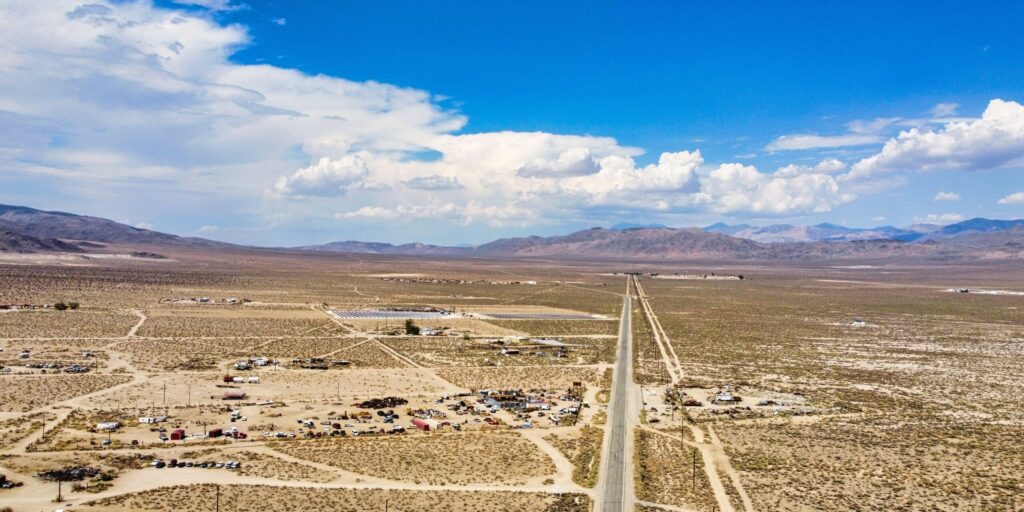The state of Nevada is experiencing a dynamic and complex economic landscape as it enters the second half of 2025. A mixture of growth in certain sectors and challenges in others has made the state’s economy one of the most interesting to watch. With a strong base in tourism, gaming, and entertainment, Nevada also sees significant growth in industries like technology, clean energy, and manufacturing, though challenges such as housing affordability, labor shortages, and inflation remain prevalent.
Economic Indicators and Legislative Actions
In the first quarter of 2025, Nevada’s real GDP showed a slight decline of 0.3% annually, according to the U.S. Bureau of Economic Analysis. This decline is largely attributed to a reduction in government spending and a slight dip in mining output. However, the state has seen steady exports, which have helped offset some of these losses, particularly in technology and energy sectors. Despite a slowdown in overall economic growth, the state remains a vital player in several industries, notably gaming, tourism, and the clean energy transition.
As tourism continues to recover from the pandemic, Nevada has experienced strong growth in travel and leisure, with Las Vegas leading the charge. The city’s iconic resorts, casinos, and entertainment venues have welcomed millions of visitors in the first half of 2025, and bookings for the summer are at an all-time high. The Nevada Tourism Office reported an increase in international visitors, particularly from the Asia-Pacific region and Europe, contributing to local businesses’ post-pandemic recovery. The convention industry has also rebounded strongly, with major trade shows and events contributing to Nevada’s economy.
However, inflation has dampened some of the optimism. Rising costs in housing, food, and services have strained both residents and businesses. Housing prices in areas like Clark County (Las Vegas) and Washoe County (Reno) have surged, making it difficult for lower- and middle-income individuals and families to secure affordable housing. This is compounded by a continued labor shortage that has impacted key sectors such as construction, healthcare, and hospitality.
Technology and Clean Energy Growth
Despite these challenges, Nevada has become a hotbed for emerging industries, particularly in technology and clean energy. In Reno, the so-called “Silicon Desert” is thriving. The Reno Technology Center has attracted startups and tech giants, offering tax incentives and a business-friendly regulatory environment that is appealing to companies in fields such as blockchain, cryptocurrency, cloud computing, and green tech. Nevada’s embrace of clean energy—especially solar power—has made the state an attractive destination for renewable energy projects.
In early 2025, Tesla, the electric vehicle maker, announced that it would expand its operations in Reno, creating thousands of new jobs in the area. The Gigafactory in Sparks is already one of the largest manufacturing sites in the world, producing battery packs and electric motors for Tesla’s vehicles. Tesla’s expansion in Nevada is expected to help the state reach its renewable energy goals, which include a pledge to produce 50% of its energy from renewable sources by 2030. This initiative is part of the broader push by Governor Joe Lombardo and state lawmakers to make Nevada a leader in sustainable energy.
The Housing Affordability Crisis
While technology and clean energy sectors are booming, Nevada faces a housing crisis that has escalated in the past few years. Housing prices in major urban centers have surged by more than 20% in the past two years, and the median home price in Las Vegas has surpassed $400,000. As a result, many residents—especially younger individuals and families—are being pushed out of the market.
To address this issue, Governor Lombardo secured a $133 million housing initiative in the 2025 legislative session, aimed at providing funds for affordable housing and incentives for developers to build multi-family units for the middle class. However, critics argue that these measures do not go far enough to alleviate the pressure on working-class families, particularly those in low-income brackets. The Governor has expressed his commitment to increasing housing affordability but also warned of the difficulty in balancing rapid growth with sustainable urban planning.
Labor Market and Workforce Development
The labor shortage remains one of Nevada’s biggest challenges. Many industries—especially hospitality, construction, and healthcare—are struggling to fill vacancies, leading to increased wages and, in some cases, staffing shortages that impact service delivery. The state’s unemployment rate is at a historic low, but workforce participation remains below the national average, largely due to the COVID-19 pandemic’s effects on work habits and an aging workforce retiring early.
To combat these issues, the Nevada Department of Employment, Training, and Rehabilitation (DETR) has rolled out several initiatives, including vocational training and apprenticeship programs aimed at upskilling the workforce. The state has also partnered with local universities to promote STEM education and encourage young people to pursue careers in technology and healthcare.
Looking Ahead
Nevada’s future economic trajectory will depend on its ability to capitalize on emerging industries while addressing the housing crisis and labor market shortages. By investing in education, workforce development, and green energy, the state has the potential to remain a leader in sustainable economic growth. However, lawmakers and business leaders will need to collaborate closely to ensure that Nevada’s working-class families can access affordable housing and that the labor shortage does not stymie the state’s economic potential.


